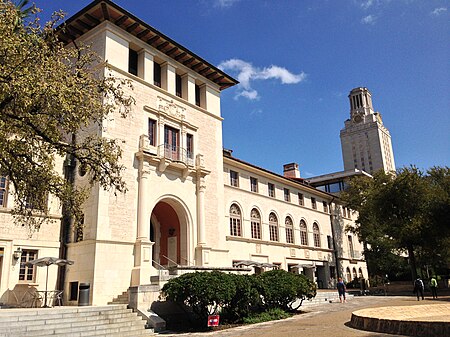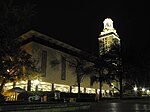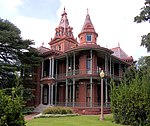Union Building (University of Texas at Austin)

The Union Building (also known the Texas Union Building or Student Union Building) is a building on the University of Texas at Austin campus, serving as a "college independent community center" or "living room" for students. Designed by Paul Cret, who also designed the Tower and Main Building, Goldsmith Hall and Texas Memorial Museum on the same campus, the Union was built in 1933 with funds provided by Texas Exes in a campaign led by Thomas Watt Gregory.Once constructed, the Union was one of four buildings on campus intended for recreation and entertainment, the other three being Gregory Gymnasium for Men, the Women's Gymnasium and Hogg Memorial Auditorium. The building hosts a bowling alley and formal ballroom.
Excerpt from the Wikipedia article Union Building (University of Texas at Austin) (License: CC BY-SA 3.0, Authors, Images).Union Building (University of Texas at Austin)
Whitis Avenue, Austin
Geographical coordinates (GPS) Address External links Nearby Places Show on map
Geographical coordinates (GPS)
| Latitude | Longitude |
|---|---|
| N 30.2867 ° | E -97.7411 ° |
Address
Union Building
Whitis Avenue 2308
78712 Austin
Texas, United States
Open on Google Maps









